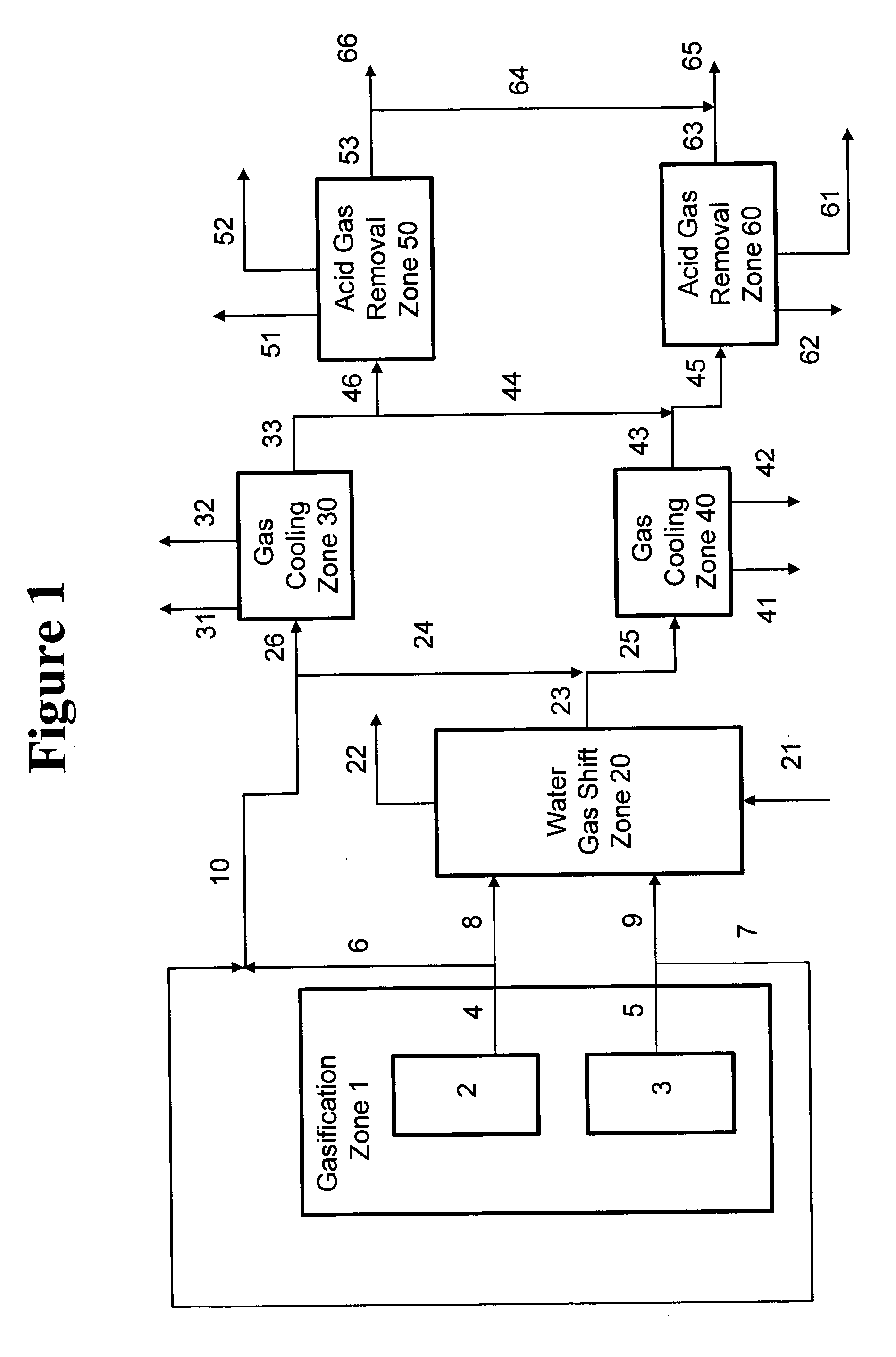Process for producing variable syngas compositions
- Summary
- Abstract
- Description
- Claims
- Application Information
AI Technical Summary
Problems solved by technology
Method used
Image
Examples
Embodiment Construction
[0028] The present invention provides for at least 2 gasifiers connected to a common or shared water gas shift reaction zone in which a portion of the raw syngas from these gasifiers may be directed to produce at least one shifted syngas stream having an enriched hydrogen content and at least one unshifted gas stream comprising the remaining portion of the raw syngas streams. The shifted and remaining portion of the unshifted syngas can be blended downstream of the water-gas shift reaction zone to produce blended and unblended syngas streams. Thus, in a general embodiment, the present invention provides a process for producing variable syngas compositions, comprising: [0029] (a) reacting an oxidant stream with a carbonaceous material in a gasification zone comprising at least 2 gasifiers to produce at least 2 raw syngas streams comprising carbon monoxide, hydrogen, carbon dioxide, and sulfur-containing compounds, [0030] (b) passing a portion of at least one of said raw syngas stream...
PUM
| Property | Measurement | Unit |
|---|---|---|
| Fraction | aaaaa | aaaaa |
| Percent by volume | aaaaa | aaaaa |
| Percent by volume | aaaaa | aaaaa |
Abstract
Description
Claims
Application Information
 Login to View More
Login to View More - R&D
- Intellectual Property
- Life Sciences
- Materials
- Tech Scout
- Unparalleled Data Quality
- Higher Quality Content
- 60% Fewer Hallucinations
Browse by: Latest US Patents, China's latest patents, Technical Efficacy Thesaurus, Application Domain, Technology Topic, Popular Technical Reports.
© 2025 PatSnap. All rights reserved.Legal|Privacy policy|Modern Slavery Act Transparency Statement|Sitemap|About US| Contact US: help@patsnap.com


